INSTITUT SUPERIEUR D'ANTHROPOLOGIE
INSTITUTE OF ANTHROPOLOGY
ONLINE COURSES / COURS A DISTANCE
FALL TERM : OCTOBER 2014
REGISTER NOW
GRECE – 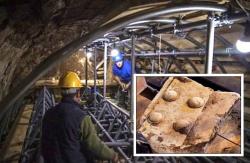 Amphipolis - Archaeologists in Amphipolis have uncovered new evidence that corroborates speculation that Casta Hill is an ancient burial complex. After removing a section of soil enclosed in the tomb’s third chamber, archaeologists found three fragments of a marble door. The marble appears to have originated on the Greek island of Thassos, as do the other examples of marble discovered in the tomb. Archaeologists are now assured that the Casta Hill complex is in fact a tomb. It follows the standard form of a Macedonian tomb, they added. Archaeologists have also uncovered a door hinge next to the marble fragments. Additionally, the excavation has unearthed several bronze and iron nails.
Amphipolis - Archaeologists in Amphipolis have uncovered new evidence that corroborates speculation that Casta Hill is an ancient burial complex. After removing a section of soil enclosed in the tomb’s third chamber, archaeologists found three fragments of a marble door. The marble appears to have originated on the Greek island of Thassos, as do the other examples of marble discovered in the tomb. Archaeologists are now assured that the Casta Hill complex is in fact a tomb. It follows the standard form of a Macedonian tomb, they added. Archaeologists have also uncovered a door hinge next to the marble fragments. Additionally, the excavation has unearthed several bronze and iron nails.
http://greece.greekreporter.com/2014/10/02/amphipolis-marble-door-found-in-third-chamber/?
SAMOA - A professor of archaeology from France has been working with the American Samoa Power Authority archeology division in analysing 25 burial sites and remains that were uncovered from the sites. Some of the burial sites are 1,500 years old and were unearthed during the recent sewerline and water line projects. Federally funded projects have to comply with the National Historic Preservation Act which requires that they take into account the effects of their undertaking on historic properties. Areas where the burial sites were discovered include Laulii, Auto, Pavaiai, Faleniu, Iliiili and Fatumafuti. Professor Frederique Valentin says research of the bones found indicate there was hardly any tooth decay, but gout was present among Samoans more than 1,000 years ago: "Gout existed in the Pacific population long before the Europeans arrived. Gout is here since the time of the Lapita people."
http://www.radionz.co.nz/international/pacific-news/256017/archeologists-probe-american-samoa-sites
IRLANDE – 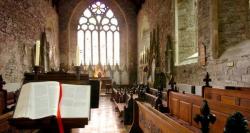 Youghal - Archaeologists have found a burial vault beneath a floor they were preparing for restoration in a church in east Cork. The vault — believed to date from the 1700s — was discovered in the 900-year-old St Mary’s Collegiate Church in Youghal. During excavations, the archaeologists also found evidence of centuries-old heating systems. The stone vault was crisscrossed by protective pine beams between it and the floor. There was reportedly no obvious indication as to who was interred but such burial chambers “would be considered high standard monuments and so would suggest an individual or family of high status, such as the merchant class, was buried there”, Mr Noonan said. “The crypt will be unopened and remain in situ,” he added. The archaeologists also found evidence of 18th century subterranean flues that carried heat from fires lit in the church. Further remnants depicted a later system that ferried water through earthen channels from a furnace. The restoration work will be completed in six weeks.
Youghal - Archaeologists have found a burial vault beneath a floor they were preparing for restoration in a church in east Cork. The vault — believed to date from the 1700s — was discovered in the 900-year-old St Mary’s Collegiate Church in Youghal. During excavations, the archaeologists also found evidence of centuries-old heating systems. The stone vault was crisscrossed by protective pine beams between it and the floor. There was reportedly no obvious indication as to who was interred but such burial chambers “would be considered high standard monuments and so would suggest an individual or family of high status, such as the merchant class, was buried there”, Mr Noonan said. “The crypt will be unopened and remain in situ,” he added. The archaeologists also found evidence of 18th century subterranean flues that carried heat from fires lit in the church. Further remnants depicted a later system that ferried water through earthen channels from a furnace. The restoration work will be completed in six weeks.
http://www.irishexaminer.com/ireland/burial-vault-found-in-youghal-church-289334.html?
INDONESIE – 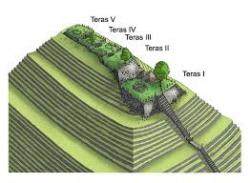 Gunung Padang - Bandung Archaeological Center head Desril Riva Shanti has taken issue with the excavation process being carried out at Gunung Padang megalithic site in Cianjur regency, West Java, adding the process had not followed standard methods that were usually applied in archaeological projects.Based on observations by The Jakarta Post, a number of Indonesian Military (TNI) soldiers had used hoes in the excavation at eastern and western parts of Gunung Padang, until the inner part of the site appeared. A member of the National Team for the Preservation and Management of the Gunung Padang Site, Danny Hilman, said the excavation had revealed an underground room built by humans in the pre-historic era. “Underneath, sand as thick as two meters was found between andesite rocks. The sand should have turned into fossil rock,” said Danny, who is also a researcher from the Geotechnology Research Center at the Indonesian Institute of Sciences (LIPI). The team recently announced traces of a civilization from 5200 BC. The Gunung Padang site is believed to be a gigantic terraced tomb, which was part of the biggest megalithic culture in the archipelago. NJ Krom, a Dutch researcher, recorded this finding in 1941. The area was uncovered again in 1979 by three local farmers.
Gunung Padang - Bandung Archaeological Center head Desril Riva Shanti has taken issue with the excavation process being carried out at Gunung Padang megalithic site in Cianjur regency, West Java, adding the process had not followed standard methods that were usually applied in archaeological projects.Based on observations by The Jakarta Post, a number of Indonesian Military (TNI) soldiers had used hoes in the excavation at eastern and western parts of Gunung Padang, until the inner part of the site appeared. A member of the National Team for the Preservation and Management of the Gunung Padang Site, Danny Hilman, said the excavation had revealed an underground room built by humans in the pre-historic era. “Underneath, sand as thick as two meters was found between andesite rocks. The sand should have turned into fossil rock,” said Danny, who is also a researcher from the Geotechnology Research Center at the Indonesian Institute of Sciences (LIPI). The team recently announced traces of a civilization from 5200 BC. The Gunung Padang site is believed to be a gigantic terraced tomb, which was part of the biggest megalithic culture in the archipelago. NJ Krom, a Dutch researcher, recorded this finding in 1941. The area was uncovered again in 1979 by three local farmers.
http://www.thejakartapost.com/news/2014/09/24/archaeologists-slam-excavation-gunung-padang-site.html
GRECE – 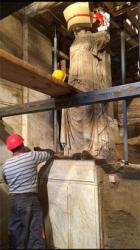 Amphipolis - The marble pedestals on which the two Caryatids of the Amphipolis burial monument (northern Greece) stand were fully revealed after the two last blocks of the sealing wall in front of the second diaphragmatic wall were removed. The decoration of the pedestals follows the marble revetment of the walls. Each pedestal’s height is 1.40m (4.59 feet), their width 1.36m (4.46 feet) and their depth 0.72m (2.36 feet). The total height of pedestal and statue is an imposing 3.67m (12 feet). The floor of this second chamber is slightly elevated by 0.07m (2.29 inches). Traces of blue pigment have been found on its surface. The 28th Ephorate of Prehistoric and Classical Antiquities has continued the excavation works, led by archaeologist Katerina Peristeri, removing debris up to 1.5m depth and revealing the rest of the marble revetment of the walls, as in the previously unearthed chamber, and a big part of the frame leading to the third chamber. Buttressing works have been completed in the first chamber and carried on in the second and third one.
Amphipolis - The marble pedestals on which the two Caryatids of the Amphipolis burial monument (northern Greece) stand were fully revealed after the two last blocks of the sealing wall in front of the second diaphragmatic wall were removed. The decoration of the pedestals follows the marble revetment of the walls. Each pedestal’s height is 1.40m (4.59 feet), their width 1.36m (4.46 feet) and their depth 0.72m (2.36 feet). The total height of pedestal and statue is an imposing 3.67m (12 feet). The floor of this second chamber is slightly elevated by 0.07m (2.29 inches). Traces of blue pigment have been found on its surface. The 28th Ephorate of Prehistoric and Classical Antiquities has continued the excavation works, led by archaeologist Katerina Peristeri, removing debris up to 1.5m depth and revealing the rest of the marble revetment of the walls, as in the previously unearthed chamber, and a big part of the frame leading to the third chamber. Buttressing works have been completed in the first chamber and carried on in the second and third one.
http://www.archaeology.wiki/blog/2014/10/01/caryatids-pedestal/
BULGARIE –  Balei - Archaeologists from the Archaeological Institute and Museum of the Bulgarian Academy of Sciences discovered 20 new burial structures and found artifacts from 3600 years ago that provide valuable information about the lives of ancient people, said Dr. Georgi Ivanov, head of the team. The study of the prehistoric settlement in Balei, Vidin, dates from the second half of the second millennium BC. Urns, bones, tools, pottery and other burial gifts discovered there provide interesting facts about the life and burial customs of the people who lived there in 1600 - 1100 BC, said Dr. Ivanov. In the last five years archaeologists have unearthed 50 burial sites, from which over 100 findings of high scientific value have been removed. They are also interesting in the neighboring regions of Romania and Serbia, where similar findings have taken place, added Georgi Ivanov. 60,000 artifacts have been discovered in Balei since 1970. 60 of them are intact pieces of ceramic pottery. Some of them are exhibited in the regional history museum in Vidin.
Balei - Archaeologists from the Archaeological Institute and Museum of the Bulgarian Academy of Sciences discovered 20 new burial structures and found artifacts from 3600 years ago that provide valuable information about the lives of ancient people, said Dr. Georgi Ivanov, head of the team. The study of the prehistoric settlement in Balei, Vidin, dates from the second half of the second millennium BC. Urns, bones, tools, pottery and other burial gifts discovered there provide interesting facts about the life and burial customs of the people who lived there in 1600 - 1100 BC, said Dr. Ivanov. In the last five years archaeologists have unearthed 50 burial sites, from which over 100 findings of high scientific value have been removed. They are also interesting in the neighboring regions of Romania and Serbia, where similar findings have taken place, added Georgi Ivanov. 60,000 artifacts have been discovered in Balei since 1970. 60 of them are intact pieces of ceramic pottery. Some of them are exhibited in the regional history museum in Vidin.
http://www.standartnews.com/english/read/archaeologists_unearth_3600_yearold_burial_sites_in_balei_vidin-5567.html
CANADA – 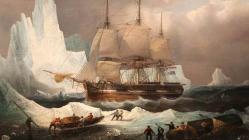 Queen Maud Gulf - Canada has determined the historic Franklin Expedition shipwreck discovered in the Arctic last month is in fact HMS Erebus, the vessel on which Sir John Franklin sailed. It’s another puzzle solved in the enthralling story of the famous British expedition that tried to traverse the Northwest Passage but ended in misery with all 129 crew members perishing. The ship was first discovered somewhere in Queen Maud Gulf west of O’Reilly Island early last month and was confirmed as a Franklin expedition ship on Sept. 7. But Parks Canada required more dives to determine whether the find was HMS Erebus or HMS Terror, the two Franklin expedition ships that disappeared in the mid-19th century. Underwater archeologists with Parks Canada positively identified the vessel following more than a half-dozen dives in mid-September. They took measurements of the wreck and captured several hours of underwater video and thousands of still photographs at the time. The divers also observed the wreck up close. It is in excellent condition for a mid-19th century shipwreck, likely because of the preservative qualities of frigid Arctic seawater, and divers were able to glean the identity from looking at specific details of the ship. The Parks Canada team used measurements gathered directly from the ship as well as multi-beam sonar imagery collected by the Canadian Hydrographic Service. They also relied on physical observations of the wreck and the footage gathered. The archeologists also conducted a comparative analysis using historical ship drawings.
Queen Maud Gulf - Canada has determined the historic Franklin Expedition shipwreck discovered in the Arctic last month is in fact HMS Erebus, the vessel on which Sir John Franklin sailed. It’s another puzzle solved in the enthralling story of the famous British expedition that tried to traverse the Northwest Passage but ended in misery with all 129 crew members perishing. The ship was first discovered somewhere in Queen Maud Gulf west of O’Reilly Island early last month and was confirmed as a Franklin expedition ship on Sept. 7. But Parks Canada required more dives to determine whether the find was HMS Erebus or HMS Terror, the two Franklin expedition ships that disappeared in the mid-19th century. Underwater archeologists with Parks Canada positively identified the vessel following more than a half-dozen dives in mid-September. They took measurements of the wreck and captured several hours of underwater video and thousands of still photographs at the time. The divers also observed the wreck up close. It is in excellent condition for a mid-19th century shipwreck, likely because of the preservative qualities of frigid Arctic seawater, and divers were able to glean the identity from looking at specific details of the ship. The Parks Canada team used measurements gathered directly from the ship as well as multi-beam sonar imagery collected by the Canadian Hydrographic Service. They also relied on physical observations of the wreck and the footage gathered. The archeologists also conducted a comparative analysis using historical ship drawings.
http://www.theglobeandmail.com/news/politics/franklin-wreck-found-in-arctic-identified-as-captains-ship/article20879477/
GRECE –  Athènes - Just when Greece thought it had come through the worst of the crisis it was hit by a new blow Wednesday—the Acropolis is crumbling. Engineers have discovered that part of the huge flat-topped rock on which the ancient Parthenon sits in the centre of Athens is starting to give way, the Greek news agency ANA said. Teams from the Central Archaeological Council found "instability over quite a wide area" after investigating a rockfall in January in which a boulder of "considerable size" tumbled from the most visited site in the Greek capital. Work to shore up the southern slope of the hill on which the 2,500-year-old temple complex sits will be necessary, the agency reported, blaming rainwater pipes from the old Acropolis museum. Despite sharp cuts elsewhere, the restoration work on the site that has been going on since the 1970s has remained sacrosanct, a symbol of the country's glorious past. In the not so glorious present Greece has had to endure six years of brutal recession, with unemployment soaring to 27 percent. However, for the first time since 2008 it is expected to see modest growth of 0.4 percent this year.
Athènes - Just when Greece thought it had come through the worst of the crisis it was hit by a new blow Wednesday—the Acropolis is crumbling. Engineers have discovered that part of the huge flat-topped rock on which the ancient Parthenon sits in the centre of Athens is starting to give way, the Greek news agency ANA said. Teams from the Central Archaeological Council found "instability over quite a wide area" after investigating a rockfall in January in which a boulder of "considerable size" tumbled from the most visited site in the Greek capital. Work to shore up the southern slope of the hill on which the 2,500-year-old temple complex sits will be necessary, the agency reported, blaming rainwater pipes from the old Acropolis museum. Despite sharp cuts elsewhere, the restoration work on the site that has been going on since the 1970s has remained sacrosanct, a symbol of the country's glorious past. In the not so glorious present Greece has had to endure six years of brutal recession, with unemployment soaring to 27 percent. However, for the first time since 2008 it is expected to see modest growth of 0.4 percent this year.
http://phys.org/news/2014-10-acropolis-crumbling.html